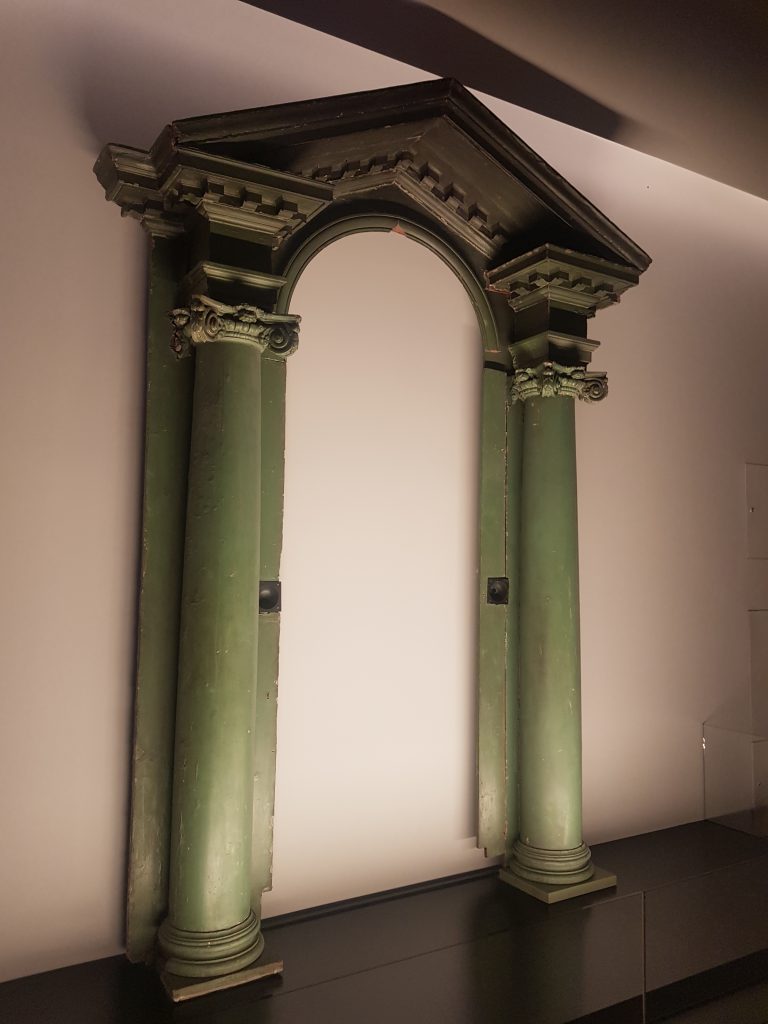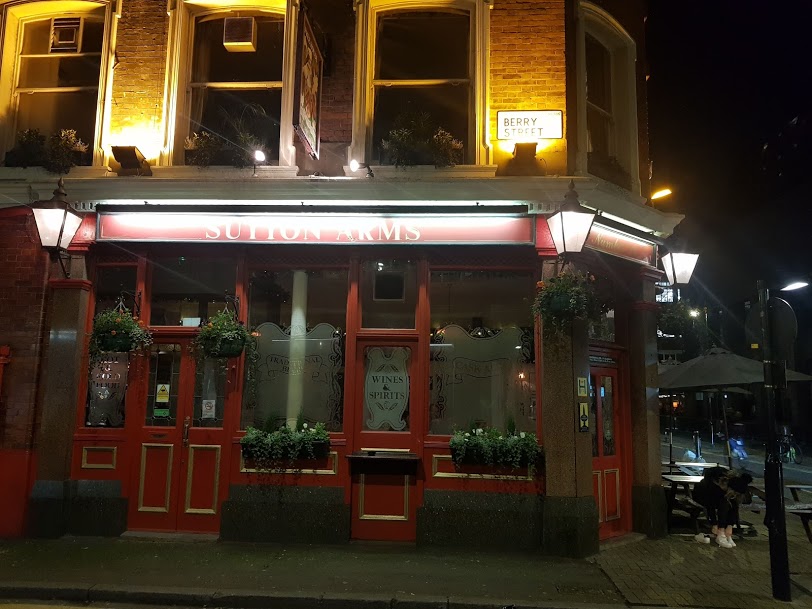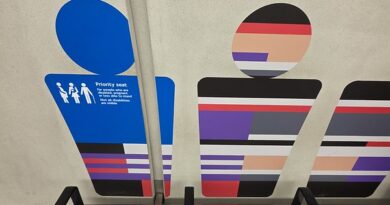London – Science Museum (Door Case from 56 Lincoln’s Inn Fields)
There seemed to be a fair few exhibits at the Science Museum which had a rather tenuous link to, well, science. This door case seems to be something better suited to the Museum of London, but it’s here as the museum say that it’s a mathematical shape following the rules of proportion.
The door case dates from the eighteenth century and it was saved before the building was demolished in 1912, to be replaced with a larger and more substantial property. The London County Council, who were the ground landlord, noted in the early twentieth century:
“In the case of No. 56, no part of the original building is in existence. The only external feature of interest is an 18th-century door case, constructed in wood (illustrated in Plate 72). The designer has effectively used Roman Ionic columns with entablatures, to support a bold pediment, below which has been placed a semi-circular fanlight to give light to the passage. The interior is uninteresting.”
They also published a partial list of residents of the building:
In 1700 and 1703 Sir Thos. Millington.
In 1708 and 1723 John Richardson.
Before 1730 to 1731. Geo. Baker.
1732–1739. Dr. Thos. Rundle.
1740–1755. “W. Murray.”
1756–1758. “Chas. Pratt.”
1759–1761. John Rayner.
1762–1769. Thos. Kinnaston.
1770–1784. Sir Walter Rawlinson.
1785–1788. S. Ewer.
1789–1793. — Heyman.
1794–1802. Mrs. Lee.
1803– Jas. White.
I’m assuming that the Thomas Millington was the physician, notable for being one of those who dissected the body of King William III in 1702. Millington died in 1703, but I have no idea whether he was responsible for the addition of the door case to the property, which I suspect he might have rented (the property, not the door case). Anyway, science or not, it’s an interesting reminder of the London which is no longer there.



